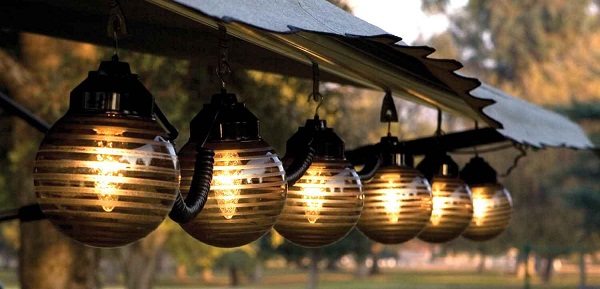While it’s not to say that installing lighting in your garden needs to be anything other than a pleasure, chances are you would much prefer to get the job done as quickly and cheaply as possible. Needless to say, it is the latter of the two that usually poses the biggest problem for most as the very best exterior designer lighting on the market does not tend to come cheap. Nevertheless, you could very well be investing in something quite beautiful that will last you a whole lifetime, so in value for money terms at least, it is almost always money well spent.

Nevertheless, if there are ways and means by which costs can be reduced and the effort involved brought down to an absolute minimum, most people will of course take it. So with this in mind, what follows is a very quick introduction to a series of helpful tips which when combined guarantee both an easier ride and a slightly less painful bill at the end of things:
- The first tip and undoubtedly the rule that should be followed to the letter is that of remembering that less is more. Whichever way you look at it and no matter how much effort you put in, if you overlight your garden you will end up with a finished result that looks more equipped for a theatrical performance than for relaxing in. There is a very fine line between a garden which is well lit and one which has been taken completely over the top and ends up looking rather outrageous for all the wrong reasons.
- In terms of positioning your lights and deciding where you would like to place them, the most important rule to follow here is that of doing your best to conceal the lights source. Ideally, the actual source of light will be entirely invisible and there will be no direct glare emitted the way of those using the garden. You can of course buy special glare guards to eliminate most of the glare, though it is much simpler, more effective and cheaper to simply position your lights behind rocks, trees, walls, shrubs or really anything else that will do the job.
- Don’t forget that shadows can create a look and an atmosphere that is uniquely interesting and powerful. One key rule when looking to light up an object in the garden is to ensure that there is nothing in the way of the light source. However, if you are playing with shadows, then the exact opposite rule applies as in this instance it is a case of deliberately blocking the light to one extent or another to create shadows.
- Along with blasting bright lights at objects in the garden to light them up, you could also try placing the lights behind them in order to create dramatic dark silhouettes. This is especially effective with trees, larger plants and larger ornaments.
- Never fall into the trap of thinking that you need to illuminate every area and surface in the garden. Quite to the contrary in fact as you will need to maintain plenty of darker areas and pay attention to shadows in order to ensure that the areas you do light up are accentuated to the highest possible extent. Often a good way of doing this is to decide in advance on a few features you would like to make visible at night and focus on these exclusively.
- Remember that the range of lighting products for gardens on the market right now is spectacularly large and varied and to say the least. There are so many different lighting types, colours, shapes, filters and other accessories around that there is limitless potential when it comes to what you can do in your garden. Half of the fun is playing around until something leaps out to you, which sooner or later it will.
- While you may be looking to save money, it is nevertheless important to invest in the highest quality products and accessories you can afford. Not only will they perform exponentially better, but they will also last longer and save you money long-term.
- Last but not least, try to remember that when it comes to a certain exterior features like vehicle driveways, paths around pools and pedestrian walkways in general, safety in the dark matters a lot more than atmosphere and mood lighting. So if you intend to light these areas, make sure it is done in a way that is effective and efficient.
